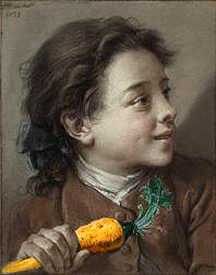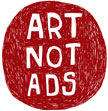9.14.2007

Notes from Saturday Sessions: These are notes I took during these sessions - they should not be misconstrued as direct quotes, or even complete thoughts...
Learning 2.0 in the Art Classroom
9:15 AM
At our first open session, some of the art teachers who were present got together to discuss what Learning 2.0 looks like in the art classroom. Here are some notes from that session:
Kate Thornburn- Blogging and podcasting about the work that they’ve been doing in the classroom. Using wikis to collect information about topics, such as environmental issues, and collect images. Using creative commons to collect images.
Kim Sajan- Brennan center at NYU Law published a paper on copy write law.
Recommended reading: “Copy Fights- The future of intelectual property in the information age.”
David Lyon – Browse forums where people post their artwork and people respond to them. Can get feedback from people outside the classroom. “Deviant Art” very popular with students.
KT- Voice Thread a place to capture audio.
Jane Klammer-Uncle Fred for use with early elementary.
KS- Online portfolios for students, sample images of future projects.
KT- Idea of posting an image and having different students react to them, focusing on different themes. For example, an image of repetition.
David Gran- Art classes have developed podcasts that can be listened to as museum guides on an mp3 player. This can also be used to create a “museum guide” for a school art show.
Art educators conference, currently being organized by SAS teachers.
Craig Roland and David Gran beginning an Artist Trading Cards Exchange, based on they olympics. See Art Ed 2.0 for more info.
Jamie McKenzie: Teaching Media Literacy in an age of wikilobbying, spin, tabloid journalism and the photoshopping of reality.
“Digital Literacy” isn’t a “literacy”.
Photoshopping of images is a metaphor for the manipulation of truth. Its not new, but technology is making it easier.
Students need to understand the world they live in, when a lot of what they see on TV is entertainment instead of news.
www.wordspy.com - a good source for new language, also www.urbandictionary.com.
Wikilobbyinng – google “Seeing Corporate Fingerprints in Wikipedia Edits”
This is the essence of wikilobbyin-g when money determins wikipedia entries reality has become a commodity.
Tabloid Journalism – When I grew up we had a thing called news, and it was required to have facts. “Life, the Movie” – book about news becoming entertainment. The roman circus was successful because people wanted to see it. 30 years ago, there was a wall between the editorial and news section, when they started loosing market share, they took down the wall. Make students aware of the ownership of media. Is web 2.0 an antidote to big-business media?
Photoshopping of Reality: The press controls what you see and don’t see.
Partial lists of “antidotes":
Text literacy
Natural literacy
Visual literacy
Kinesthetic Literacy
Numerical literacy
Media Literacy
Artistic Literacy
Emotional Literacy
Cultural Literacy
Social Literacy
Ethical Literacy
Critical Literacy
Students should be given ample opportunities to look critically at news coverage, sometimes in an English class, sometiems in social studies, sometimes in math and science.
Further information and activities about teaching Media Literacy by Jamie MacKenzie can be found at: http://fno.org/dec06/covdec.html.
1:15 PM
How to Start a Film Festival in Your School
(or Learning in the Conceptual Age).
By Richard Fredericks
What do you need to provide? An understanding of the technical process, an understanding of the storytelling process (recommend Joseph Campbell's The Hero With A Thousand Faces, Christopher Vogler's The Writer's Journey). Specific guidelines and directions. An infectious interest and fascination with film. If you say "make a film" it won't happen, but if you give them a target to aim for you'll have better results. You don't have to be the world's best cinematographer, Non-linear editing skills are key. Know about encoding- how to get the best quality results out of your system (.wmv, .mov, .mp4). It has to be big enough to be good quality, and small enough to download in a reasonable amount of time.
Storytelling - must have a beginning, middle, and end. The Hero's journey is a good starting point.
Documentary Style - Presenting information creatively to engage an audience. Narrative voide, interviewing skills, let the pictures speak fro themselves.
Student response to film course: See films beyond entertainment, films can be dissected. Film is power, its a tool for creating discussions, instigating change that we want to see in the world.
Contests:
2880 minutes (48 Hours) Contest
Provide: theme, prop, line of dialogs.
Start Friday @ 5:00 - planning, storyboarding
Saturday- shooting, scoring music.
Sunday- Editing, encoding, uploading by 5:00
Next 48 Hour contest at HKIS - Friday October 19th-21st.
Join by:
1.Organizing Teams
2. Send email to HKIS Film Club - Rfriedericks@hkis.edu.hk
3. Wait for START email.
4. Participate.
Tai Tam Independent Film Festival
Saturday, Feb. 23, 2008
A Virtual Film Festival with an online venue via HKIS Dragon Media.
Quadrants to track learning:
1. Self expression, self reflection, creativity (subjective).
2. Skills with equipment (objective).
3. Communicating and connecting with others (subjective).
4. Research and planning abilities (objective).
Recommended Reading: John Golden's Reading in the Dark: Using Film As a Tool in the English Classroom.
Script resource : The Internet Movie Script Database IMSDB.com.
Dragon Media (Hong Kong International School Media Server) - Samples of Student Work.
3:20 PM
Alan November: Building Learning Communities
Stanford University EPGY Online High School
At Stanford, every professor's lecture is recorded and podcast so that at the end of their career, evey student will have a complete collection of their professor's lectures on their Ipods.
Every student should use social bookmarking- students can build on each other's research. del.icio.us. Social Bookmarking will show you what the masses are seeing on a specific topic, which won't always be the best info, but it is important to see what is being looked at on a given subject.
Fan Fiction - students use pseudonyms online to seperate critism directed at them and criticism directed at their work. They are motivated by reinforcement. If we use the web, we need to tap into their cultural needs. Allow them to take risks to have the most people to see their work.
Kids from the South Bronx creating poetry get authentic assessment from real poets instead of the teacher- this motivates them to think beyond their assignments. When they don't know who is assessing them (outside the classroom) they try harder. They start with videotaping to get good writing. 
Tags: Digital Art, learn2cn, Media Literacy, Web 2.0
















